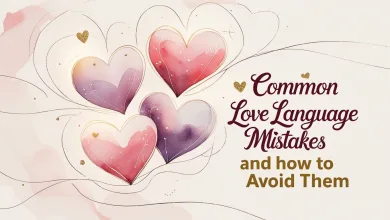Monogamy or Non-Monogamy? Finding Your Relationship Truth

In today’s evolving relationship landscape, more people are questioning traditional structures and exploring alternatives. Is monogamy the only path to relationship fulfillment, or could non-monogamous arrangements offer different but equally valid forms of connection? Let’s dive into this fascinating exploration of human bonds, desires, and commitments.
The Evolution of Relationship Structures
Goodness, hasn’t love gotten complicated? Well, maybe it always was! Throughout human history, our understanding of relationships has undergone dramatic transformations. What we often consider “traditional” monogamy is actually relatively recent in the grand scheme of things.
Ancient civilizations approached pair bonding in wildly different ways. The Romans, despite their reputation for debauchery, actually established legal frameworks for monogamous marriages – though these often existed alongside accepted extramarital relationships, especially for men. Meanwhile, polygamous marriages have been practiced across cultures for millennia, from ancient Hebrew societies to historical Chinese dynasties, and continue in some cultures today.
Fast forward to today, and we’re experiencing another relationship revolution. The rise of dating apps, changing gender norms, and greater LGBTQ+ visibility have all contributed to a more open conversation about relationship diversity. Non-monogamy isn’t new, but the terminology, visibility, and social acceptance certainly are evolving rapidly.
What Is Monogamy, Really?
Let’s get down to brass tacks. When we talk about monogamy, what exactly are we referring to? At its simplest, monogamy means committing romantically and sexually to one person at a time. But there’s nothing simple about human relationships, is there?
Monogamy comes in several flavors:
- Serial monogamy: Having one partner at a time, but moving from one monogamous relationship to another over a lifetime
- Social monogamy: Presenting as a couple to society while potentially having different private arrangements
- Sexual monogamy: Being sexually exclusive with one partner
- Emotional monogamy: Maintaining romantic and emotional exclusivity
For many people, monogamy offers profound benefits. There’s the deep security that comes from knowing you’re someone’s “one and only.” Studies consistently show that stable, monogamous relationships are associated with better health outcomes, including lower stress levels and stronger immune systems.
“Monogamy allows for a level of trust and vulnerability that many find essential for deep intimacy,” explains Dr. Helen Fisher, biological anthropologist and senior research fellow at The Kinsey Institute. “When we don’t have to worry about competition, many people find they can open themselves more fully to their partner.”
However, monogamy isn’t without its challenges. The pressure to fulfill all of a partner’s needs – sexual, emotional, intellectual, and social – can be overwhelming. And let’s be honest, monotony and routine can creep into even the most loving relationships over time.
The Non-Monogamy Spectrum
Whew! Ready to explore the other side? Non-monogamy isn’t just one thing – it’s a whole spectrum of relationship styles that involve romantic or sexual connections with multiple people, with various levels of openness, rules, and structures.
Polyamory: Love Multiplied
Polyamory literally means “many loves” and involves having multiple romantic and often sexual relationships simultaneously, with the knowledge and consent of everyone involved. It’s built on the radical notion that love isn’t a finite resource – loving one person doesn’t diminish your capacity to love another.
Polyamorous relationships can take countless forms:
- Hierarchical polyamory: Having a “primary” relationship with one partner (often a spouse or long-term partner) and “secondary” relationships with others
- Non-hierarchical polyamory: Rejecting relationship hierarchies and attempting to give equal priority to all relationships
- Relationship anarchy: Rejecting traditional relationship labels and allowing each connection to develop according to its own unique dynamics
Research from the University of Michigan suggests that about 20% of Americans have engaged in consensual non-monogamy at some point in their lives. That’s a lot of folks exploring beyond traditional relationship boundaries!
Open Relationships: Defined Boundaries
Unlike polyamory, which often emphasizes emotional connections with multiple people, open relationships typically maintain a core emotional partnership while allowing sexual experiences with others. The “rules of engagement” vary tremendously from couple to couple.
Some common open relationship structures include:
- Don’t ask, don’t tell: Partners agree to outside sexual encounters but don’t share details
- Swinging: Couples who exchange partners or engage in group sex, often at organized events
- Monogamish: A term coined by sex columnist Dan Savage to describe relationships that are primarily monogamous but occasionally allow outside sexual encounters
The success of open relationships often hinges on clear communication, honest negotiation of boundaries, and ongoing consent. It’s definitely not for the communication-averse!
Psychological Perspectives: What Makes Us Choose?
Ah, the big question – why do some of us gravitate toward monogamy while others feel more fulfilled in non-monogamous arrangements? Let’s dig into the psychology, shall we?
Our attachment styles, formed in early childhood, play a significant role in our relationship preferences. Those with secure attachment often navigate both relationship styles successfully, while anxiously attached individuals might struggle more with the uncertainties of non-monogamy.
“Personality factors like openness to experience correlate with interest in consensual non-monogamy,” notes Dr. Terri Conley, Associate Professor of Psychology at the University of Michigan. “People who score higher on jealousy measures tend to prefer monogamy.”
There’s also the fascinating influence of sociobiological factors. Some evolutionary psychologists argue that men may be biologically inclined toward multiple partners to maximize reproductive potential, while women may prefer secure, monogamous bonds to ensure resources for offspring. However, this simplistic view has been challenged by anthropological evidence of diverse mating strategies across cultures and growing recognition of gender diversity beyond binary categories.
Cultural conditioning undoubtedly plays an enormous role too. Most of us grew up bombarded with monogamy-centric messaging – from Disney princesses finding their “one true love” to religious teachings about the sanctity of exclusive marriage. Breaking free from these deeply ingrained narratives requires significant self-reflection.
Making It Work: The Non-Negotiables
Whether you’re team monogamy, exploring the poly lifestyle, or somewhere in between, certain relationship foundations are absolutely non-negotiable. Let’s talk about what makes any relationship configuration successful.
Communication: The Ultimate Relationship Superpower
I can’t emphasize this enough – open, honest communication is the bedrock of any healthy relationship, but it becomes even more critical in non-traditional arrangements. You’ve gotta talk about everything – desires, boundaries, insecurities, schedules (oh, the scheduling complications of multiple relationships!).
“The communication skills developed in successful non-monogamous relationships would benefit any couple,” says relationship therapist Esther Perel. “These include expressing needs clearly, negotiating boundaries, and discussing jealousy openly rather than avoiding these conversations.”
For monogamous couples, communication remains equally vital but often focuses more on maintaining connection and addressing issues within the dyad rather than negotiating external relationships.
Emotional Intelligence: Feeling Your Way Through
Both relationship models require substantial emotional intelligence – the ability to recognize, understand, and manage emotions in yourself and others.
In monogamous relationships, emotional intelligence helps partners navigate the inevitable ebbs and flows of desire and connection over a long-term commitment. In non-monogamous relationships, it becomes essential for managing complex feelings like jealousy, compersion (feeling joy when your partner experiences pleasure with someone else), and the emotions of multiple partners.
“Jealousy isn’t unique to monogamy or non-monogamy,” explains polyamory educator Leanne Jenkins. “What differs is how these emotions are framed and addressed. In healthy non-monogamous relationships, jealousy is seen as an opportunity for growth and communication rather than proof the relationship model doesn’t work.”
Common Challenges and How to Navigate Them
No relationship style is without its hurdles. Let’s look at some common challenges for both monogamous and non-monogamous relationships.
The Monogamy Challenges
Monogamous relationships often face:
- Boredom and sexual monotony: After years together, keeping the spark alive requires creativity and intention
- Codependency: The risk of becoming overly enmeshed and losing individual identity
- Unmet needs: When one partner cannot fulfill all of another’s diverse needs and desires
- Infidelity: Breaking agreed-upon exclusivity, which can be devastating to trust
Addressing these challenges requires ongoing investment in the relationship. Regular date nights, couples therapy, exploring fantasies together, and maintaining independent interests can all help monogamous relationships thrive long-term.
The Non-Monogamy Challenges
Meanwhile, non-monogamous folks often contend with:
- Social stigma: Facing judgment from family, friends, and society at large
- Time management: Balancing multiple meaningful relationships requires exceptional scheduling skills
- Emotional complexity: Managing the feelings and needs of multiple partners simultaneously
- Jealousy and insecurity: Working through these emotions without the cultural scripts that exist for monogamy
Successful non-monogamous relationships typically involve extensive reading about polyamory, often joining community groups for support, and sometimes working with therapists who specialize in alternative relationship structures.
The Big Decision: How Do You Choose?
You’re probably wondering, “How the heck do I figure out which relationship style is right for me?” Great question! It’s a deeply personal decision that requires honest self-reflection.
Start by exploring your motivations. Are you curious about non-monogamy because you’re genuinely drawn to loving multiple people? Or are you trying to fix problems in an existing relationship? (Spoiler alert: opening up rarely fixes relationship issues – it usually amplifies them!)
Consider your personal history with jealousy, security, and attachment. While these emotions can be worked through in any relationship model, knowing your tendencies helps you anticipate challenges.
Most importantly, explore your authentic desires, not what you think you should want. “The most tragic relationship outcomes occur when people deny their true relationship needs to conform to external expectations,” says relationship coach Dr. Liz Powell. “Whether you desire monogamy or non-monogamy, owning your truth is the first step toward relationship fulfillment.”.
Frequently Asked Questions About Relationship Styles
Is non-monogamy just a fancy term for cheating?
Absolutely not! The fundamental difference is consent. Cheating involves breaking agreed-upon boundaries, while ethical non-monogamy involves transparent communication and consent from all involved. In fact, research suggests that polyamorous people often place an extremely high value on honesty and communication.
Are monogamous relationships more stable than non-monogamous ones?
Not necessarily. Relationship stability depends on numerous factors, including compatibility, communication skills, and commitment – not relationship structure. Some research indicates that polyamorous relationships have similar longevity to monogamous ones when measured from the time all parties agree to the relationship structure.
Can someone be happy in both monogamous and non-monogamous relationships?
Yes! Many people are “ambiamorous,” meaning they can be fulfilled in either relationship structure depending on the specific partners and circumstances. Relationship preferences can also evolve throughout a person’s lifetime as they gain experience and self-knowledge.
Does wanting non-monogamy mean I don’t love my partner enough?
Not at all. Many people in loving, committed relationships explore non-monogamy. The desire for multiple connections often has nothing to do with the quality of existing relationships and more to do with a person’s relationship orientation – similar to how sexual orientation is an inherent aspect of identity.
The Final Thought: Your Relationship, Your Rules
As we wrap up this exploration of monogamy and non-monogamy, I want to leave you with one critical takeaway: there is no universally “right” way to structure your relationships. What matters is finding arrangements that honor your authentic desires, respect all involved, and create space for growth and joy.
Whether you choose the depth and focus of monogamy or the breadth and complexity of non-monogamy, successful relationships share common elements: honest communication, emotional intelligence, respect for boundaries, and ongoing consent.
Perhaps the most beautiful aspect of today’s relationship landscape is the growing recognition that relationships can be consciously designed rather than defaulted into. By questioning assumptions, communicating desires, and creating intentional agreements, we can build relationships that truly reflect our unique values and needs.
Whatever path you choose, remember that relationships require ongoing work, adjustment, and care. The question isn’t just monogamy or non-monogamy – it’s about creating relationships with integrity, kindness, and authenticity. And that’s something we can all aspire to, regardless of how many partners we love.






